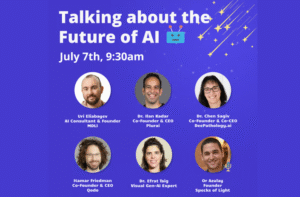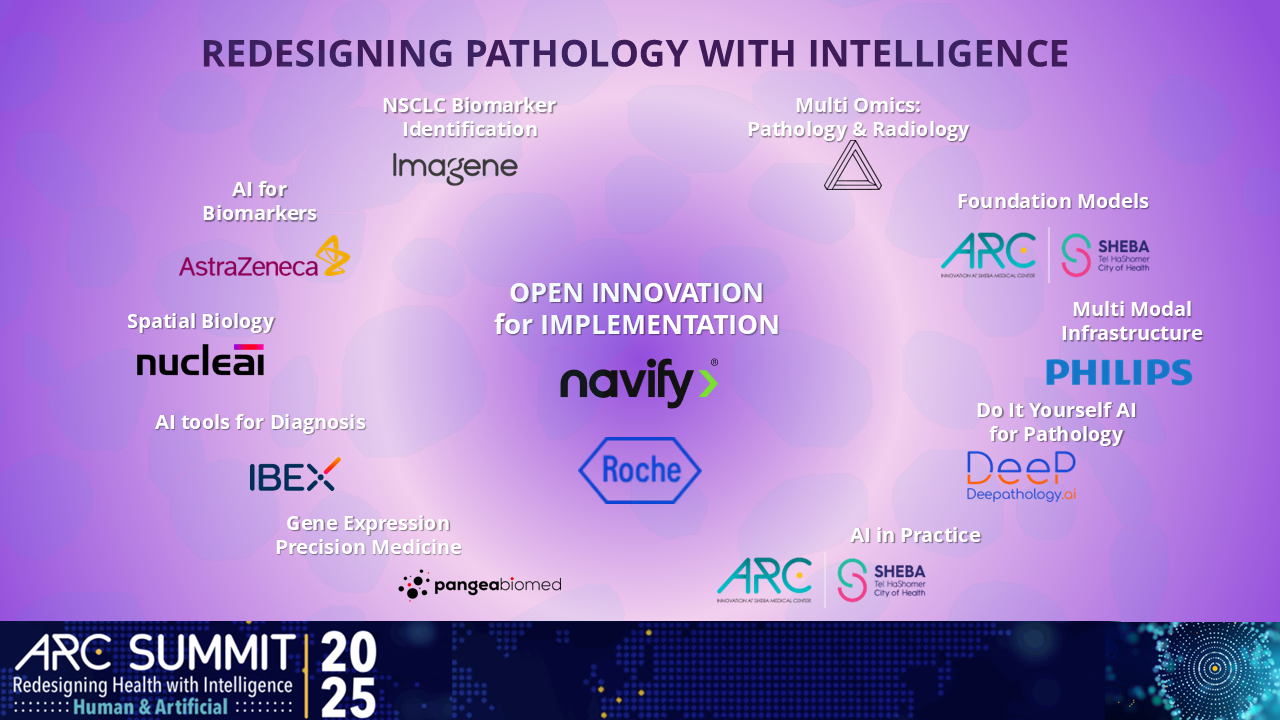
It took me some time to organize my thoughts and write this summary of the round table event on Computational Pathology in practice that I was honored to moderate during the ARC summit in Tel Aviv.
The round table panel was the initiative of Prof. Iris Barshack. Prof. Barshack is head of institute of pathology, Sheba. Chair of the Israeli association of pathologists, dean elect of the Medicine Faculty in Ariel University as of October 1st and accompanying dean of the Medicine Faculty in the Weizmann Institute.
The Institute of Pathology in Sheba embraced digital and computational pathology for its routine workflow and in parallel is engaged in research in AI for pathology in two ways: the first is collaboration and co development with AI for pathology companies. In fact, Prof. Barshack and the Institute of Pathology in Sheba were active partners in the development of the AI solutions of some of the startups participating in the round table. The second way is having a Computational Pathology Lab within the pathology institute that conducts independent research. The setting of the round table was quite unusual. All industry players in the Israeli computational pathology system were gathered in the same room and sharing their perspectives. We also had a unique guest and keynote speaker, Michael Rivers who is Vice President/Lifecycle Leader, Digital Pathology at Roche.
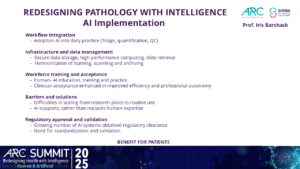 The session kicked of with a welcome and introduction of Prof. Barshack. Prof. Barshack described the journey of the institute of pathology in Sheba towards AI implementation: the effort for workflow integration and the creation of the infrastructure and data management capabilities that are essential for a smooth AI integration. Prof. Barshack also emphasized the need to on board the team and to offer training and practice to eventually achieve efficiency and acceptance of the new technology. Prof. Barshack addressed the challenges of scaling from research projects to routine use while keeping in mind that AI solutions serve as decision support systems and that further standardization is need in this field.
The session kicked of with a welcome and introduction of Prof. Barshack. Prof. Barshack described the journey of the institute of pathology in Sheba towards AI implementation: the effort for workflow integration and the creation of the infrastructure and data management capabilities that are essential for a smooth AI integration. Prof. Barshack also emphasized the need to on board the team and to offer training and practice to eventually achieve efficiency and acceptance of the new technology. Prof. Barshack addressed the challenges of scaling from research projects to routine use while keeping in mind that AI solutions serve as decision support systems and that further standardization is need in this field.
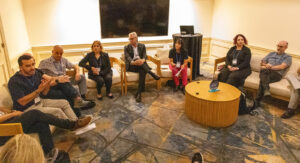 Following the introduction of Prof. Barshack, Michael Rivers was invited to give a keynote address. Mikel kicked off his keynote describing the unique positioning of Roche as Diagnostics leader on one hand and as a Pharmaceuticals leading provider of cancer treatments worldwide. He then introduced navify, a scalable software solution designed to facilitate an efficient pathologist workflow to support full lab digitization and scan sign out. Navify provides Roche image analysis algorithms as well as an open environment to integrate third party image analysis tools for pathologists. Mikel gave as an example the TROP2 AI driven companion diagnostic that was granted FDA breakthrough device as well as use cases of using navify DP in the Institute of Pathology in Sheba, enabling the sequential application of multiple AI solutions.
Following the introduction of Prof. Barshack, Michael Rivers was invited to give a keynote address. Mikel kicked off his keynote describing the unique positioning of Roche as Diagnostics leader on one hand and as a Pharmaceuticals leading provider of cancer treatments worldwide. He then introduced navify, a scalable software solution designed to facilitate an efficient pathologist workflow to support full lab digitization and scan sign out. Navify provides Roche image analysis algorithms as well as an open environment to integrate third party image analysis tools for pathologists. Mikel gave as an example the TROP2 AI driven companion diagnostic that was granted FDA breakthrough device as well as use cases of using navify DP in the Institute of Pathology in Sheba, enabling the sequential application of multiple AI solutions.
Following the inspiring introductions, the round table started.
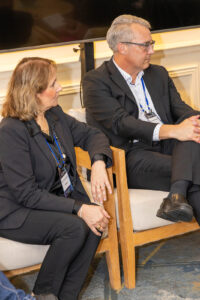 The first panelist was Dean Bitan, co founder and CEO at ImageneAI. Dean spoke about the fruitful collaboration with Sheba that yielded Biomarkers for Non-Small Cell Lung Cancer Diagnosis and provided his vision for a multi modal approach that combines pathology with other modalities. Roi Yair, Oncology Diagnostic and Innovation Lead at AztraZeneca shared how pharma giants join forces to bring new biomarkers such as the TROP2 to the market. Avi Veidman, co founder and CEO at Nucleai emphasized the importance f Spatial Analysis in Drug Outcome prediction. Manuela Vecsler, VP Clinical & Scientific Affairs at Ibex Medical Analytics shared how Ibex is committed to bring validated diagnostic solutions to the market, Tuvik Beker, co founder and CEO of Pangea Biomed described the added value of gene expression combined with pathology analysis, over existing models. Shani Ben Amitai, CTO and Co founder of Predix introduced how multimodal AI, linking radiology, digital pathology, and genomics, is reshaping computational pathology. Alex Loebel, Head of Computational Pathology at Sheba Institute of Pathology shed some light on the work that is done in the institute of pathology with foundation models and self learning to create new AI solutions. This is a super important and impressive aspect of the institute of pathology in Sheba: its ability to bring pathologists and AI experts together to work on innovative solutions to serve actual clinical needs. Yossi Kam, Digital Pathology, Oncology & Neurology Clinical Lead at Philips shared how Philips is offering an infrastructure for open innovation in pathology and I shared the concept of a Do It Yourself platform for AI solutions creation in Pathology, and specifically, the DeePatholgy STUDIO is used for research in Sheba.
The first panelist was Dean Bitan, co founder and CEO at ImageneAI. Dean spoke about the fruitful collaboration with Sheba that yielded Biomarkers for Non-Small Cell Lung Cancer Diagnosis and provided his vision for a multi modal approach that combines pathology with other modalities. Roi Yair, Oncology Diagnostic and Innovation Lead at AztraZeneca shared how pharma giants join forces to bring new biomarkers such as the TROP2 to the market. Avi Veidman, co founder and CEO at Nucleai emphasized the importance f Spatial Analysis in Drug Outcome prediction. Manuela Vecsler, VP Clinical & Scientific Affairs at Ibex Medical Analytics shared how Ibex is committed to bring validated diagnostic solutions to the market, Tuvik Beker, co founder and CEO of Pangea Biomed described the added value of gene expression combined with pathology analysis, over existing models. Shani Ben Amitai, CTO and Co founder of Predix introduced how multimodal AI, linking radiology, digital pathology, and genomics, is reshaping computational pathology. Alex Loebel, Head of Computational Pathology at Sheba Institute of Pathology shed some light on the work that is done in the institute of pathology with foundation models and self learning to create new AI solutions. This is a super important and impressive aspect of the institute of pathology in Sheba: its ability to bring pathologists and AI experts together to work on innovative solutions to serve actual clinical needs. Yossi Kam, Digital Pathology, Oncology & Neurology Clinical Lead at Philips shared how Philips is offering an infrastructure for open innovation in pathology and I shared the concept of a Do It Yourself platform for AI solutions creation in Pathology, and specifically, the DeePatholgy STUDIO is used for research in Sheba.
The round table discussion was concluded by two pathologists from Sheba. Efrat Ofek, who uses the ImageneAI solution in her diagnostics and Nadia Prisant who gave an interesting view on liquid biopsies and AI.
It was a unique and inspiring event. It gave us the opportunity to sit together, as a community: clinicians, pharma companies, medical devices companies, startups, academia – all working and collaborating to advance healthcare and to redesign pathology with intelligence. And intelligence is not only artificial. Time and again, we witness that human intelligence remains a critical component when it comes to innovation and implementation.
Chen Sagiv, PhD
Co CEO & Co Founder, DeePathology LTD.

